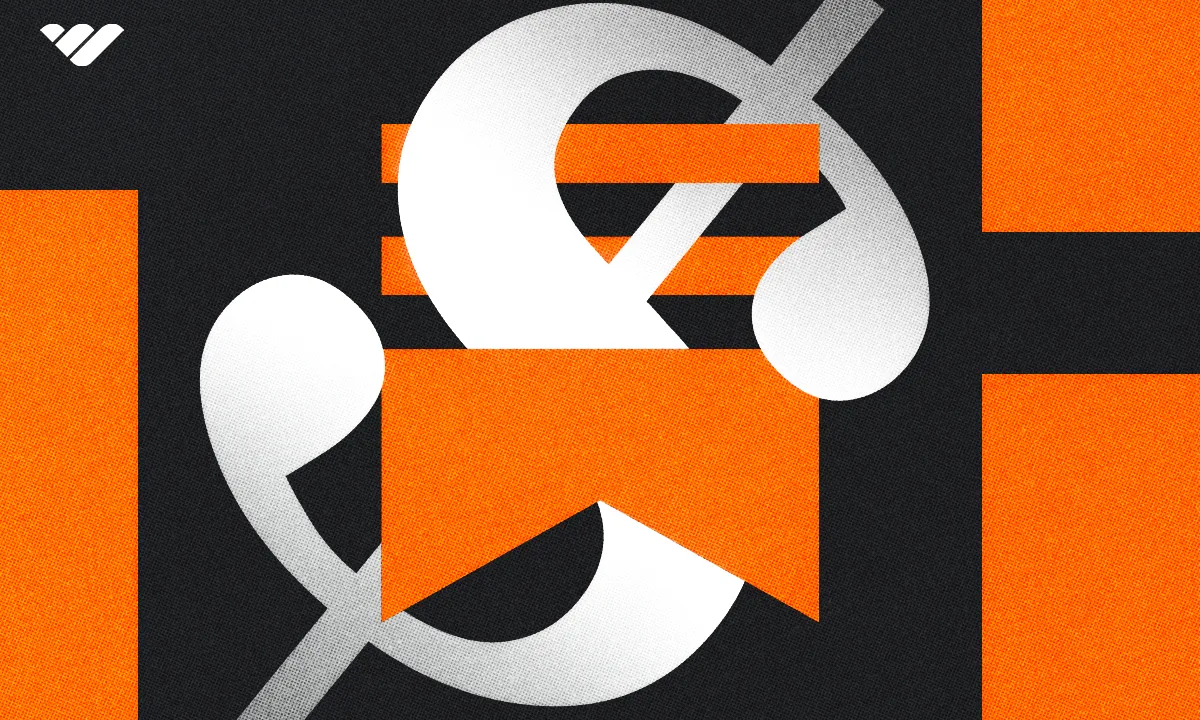Discover 8 expert ways to start making money with substack today and pick the one that works best for you.
Key takeaways
- Successful Substack creators use freemium models, offering free content to grow audiences while monetizing exclusive posts.
- Diversifying beyond subscriptions with digital products, courses, and paid communities maximizes your newsletter revenue.
- Affiliate marketing and sponsorships work best when recommendations are genuine and relevant to your audience.
Creating a newsletter is a good way to build an engaged audience. No matter your niche, be it crypto, cooking, or fitness, there are people out there who want to hear what you have to say. All you need to do is start posting.
Substack is one of the most popular platforms for setting up a newsletter, so you might be wondering just how to make money with it. While Substack offers two ways to monetize your newsletter on their platform, the best way to make money is to diversify and create multiple streams of income (we will get into this later!).
Below, we'll dive into all the ways that you can make money on Substack and help you choose what's right for you.
How do newsletters generally make money?
Whether you already have your own newsletter or not, chances are you're subscribed to a few. Often, we sign up for newsletters while making various accounts or purchases (or trying to nab a discount code).
In the case of promotional newsletters like that, it's easy to figure out how they make their money—they show you products you might want to buy, you check them out, and boom! The next day, there's a package at your doorstep.
But what about newsletters that aren't just a gateway to ecommerce sales? Trust me, those newsletter writers get paid too. They just needed to get a little more crafty first.
At its most basic, a newsletter makes money by charging subscription fees. On Substack, you can offer free or paid newsletters; the latter make you some money. Creators can also collect tips on various platforms, such as through Whop or Patreon.
Outside of charging subscriptions or getting tips, newsletter writers make most of their money by selling digital products and offering various services to their audience.
Diversifying is the name of the game here. Instead of focusing only on newsletter content, the most successful content creators dip their hands into many pots of gold. That way, both sides win—you earn more money and your audience gets more content. Before we explore the various ways you could be making money from your Substack newsletter or blog, let's talk about how monetization works on Substack to begin with.
How monetization works on Substack
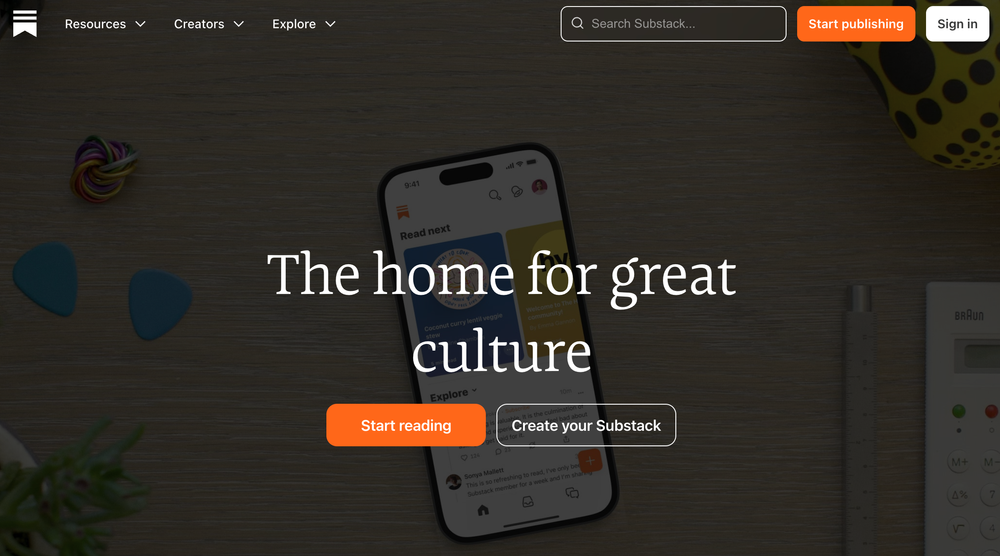
Anyone can make a newsletter on Substack, and signing up takes about 30 seconds. It's incredibly easy to set up, that's for sure. But what next?
Without going off-platform, Substack allows its writers to run free newsletters at no cost. If you want to get paid, the two options available to you include selling memberships and receiving pledges. Substack takes a 10% cut from each sale.
Substack memberships
To get paid by your newsletter subscribers, you need to set up a paid Substack membership. The platform offers the following subscription options:
- Free: As the name suggests, this is a free content tier.
- Monthly subscription: You can charge your subscribers a monthly fee for your paid newsletters. The cheapest subscriptions start at $5 per month.
- Annual subscription: Yearly subscriptions start at a $50 annual fee.
- Founding Member plan: This is a plan for those of your readers who want to go the extra mile. It costs more than the monthly and annual subscriptions, and you can set your own fee.
Many Substack writers choose to use a mix of free and paid newsletters. To be successful, your best bet is to be versatile. Offer some interesting content without a paywall, then lock some of it behind a subscription. Founding Members should have access to exclusive posts and newsletters to make it worthwhile, too.
Pledges on Substack
If your Substack newsletter is still on the smaller side and you don't feel ready to monetize it on a grander scale, you can try out Pledges. Pledges are essentially a tool for tipping; your readers can choose to send you a Pledge to express their appreciation.
Pledges are not a one-time thing, though. They're only active if you don't run a paid newsletter. People who read your free Substack newsletter will be prompted to pledge on a monthly, yearly, or Founding Membership basis. You can set your own pricing for these, assuming they're higher than the platform-wide $5/month and $50/year minimum.
Then, if you ever enable paid newsletters or articles, those who pledged will automatically turn into paid subscribers.
8 ways to maximize your Substack revenue
There's a lot of potential in monetizing your newsletter. Even just setting up paid subscriptions through Substack will give you some money—but unless you have a huge subscriber base, that money may not add up to a lot.
We've got some tips and tricks on making the most out of those Substack subscriptions. More than that, we'll show you what else you can do to start making big bucks on a regular basis.
1. Use a freemium model
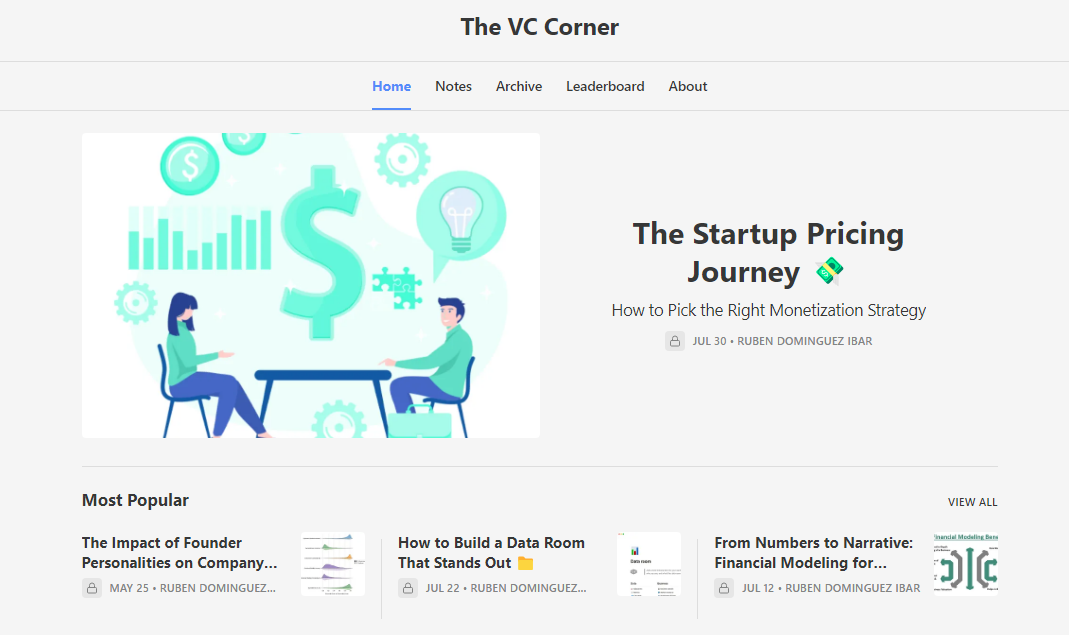
Let's say you've got yourself a Substack newsletter, and it's doing well. You've built up a subscriber base and you're thinking of turning it into a paid venture. After all, how much of your time can you spend on this if it's all for free, right?
While it's true that you deserve to be rewarded for your hard work, locking all of your content behind a paywall is a risky business. It might work, but it might also backfire, and your subscriber count won't grow as fast as it would if you also offered some free content, too.
This is why most Substack creators use a freemium model, also referred to as "one free, one paid". In this model, you'll offer exclusive content to paid subscribers while still offering free content to the rest of your audience.
One example of this is The VC Corner, which offers one premium post per week if you pay for it, but still posts a weekly digest for free.
2. Sponsorships
Once you've built up a bit of an audience, you can start considering partnering up with various brands to promote their products or services through your newsletter. Be mindful, though, because sponsorships can be as tricky to pull off as they can be lucrative.
Newsletters are different from social media posts in that whoever is signed up is there for you, your words, and your content. It's not funny videos and memes—your readers genuinely care about what you have to say. This puts you in a great position to advertise, but if you overdo it, you might find yourself losing subscribers.
To pull off sponsored posts successfully, consider the following:
- Is your audience interested in this product or service?
- Is it something that you might be willing to use yourself?
- Would you still recommend it if you weren't being paid for it?
Beyond that, make sure that you're not running sponsorships too often. They should only take up a small portion of your content and be marked as an advertisement—your readers will appreciate the transparency.
3. Create a paid community
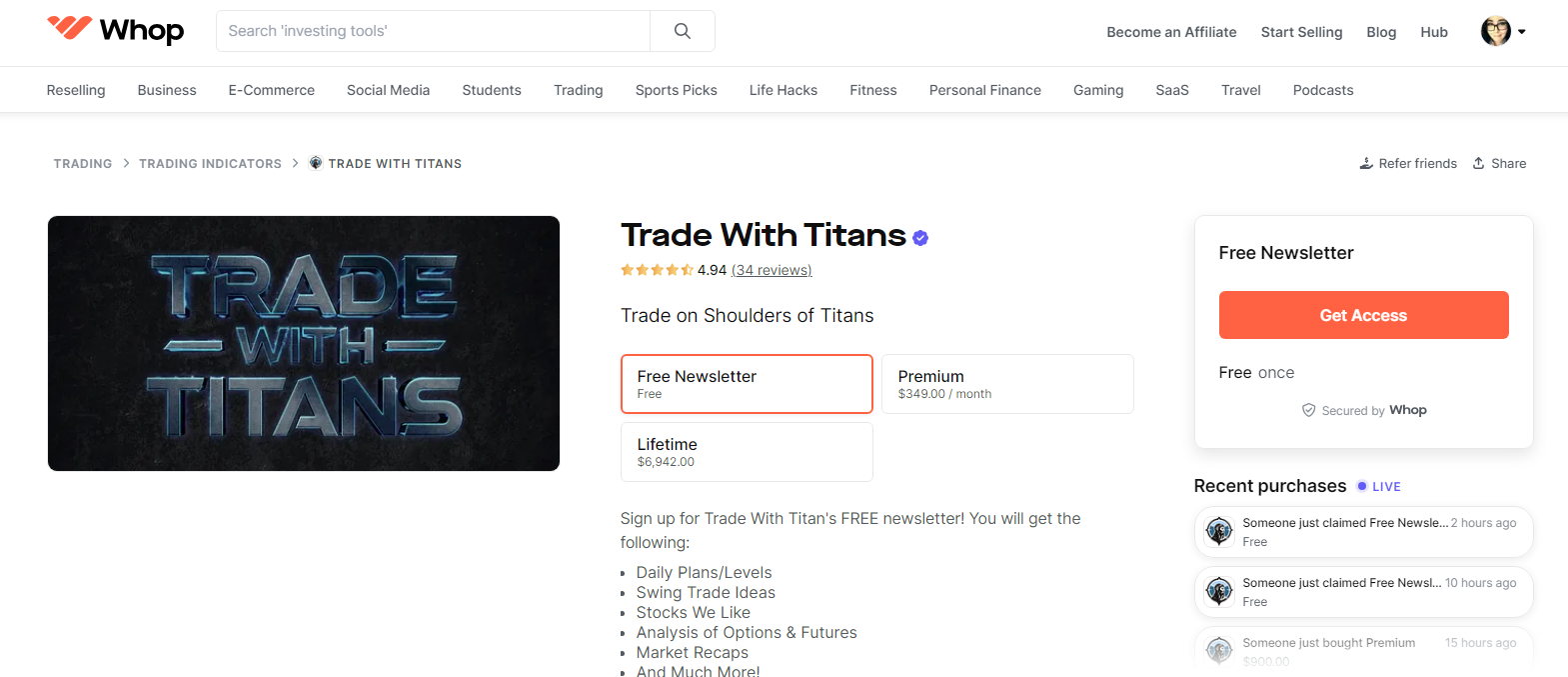
Few ways of making money on Substack are as good as bundling your newsletter with a paid, exclusive community.
After all, you've already curated yourself an audience that's interested in your content and has shared interests. Putting them all together in a single community is bound to strengthen the engagement you already get from your audience.
Running a paid community, such as a chat in your whop, is a great idea because:
- Your audience gets to interact with you and with each other on a level that's entirely impossible in a newsletter
- You can offer extra content with ease
- You can set up events and one-on-one calls
- You can get paid so much more by charging an extra subscription for a useful, relevant community
As an example, Trade With Titans on Whop offers a free newsletter for everyone, but also charges $349/month for access to a private Discord server with exclusive content.
4. Sell digital products
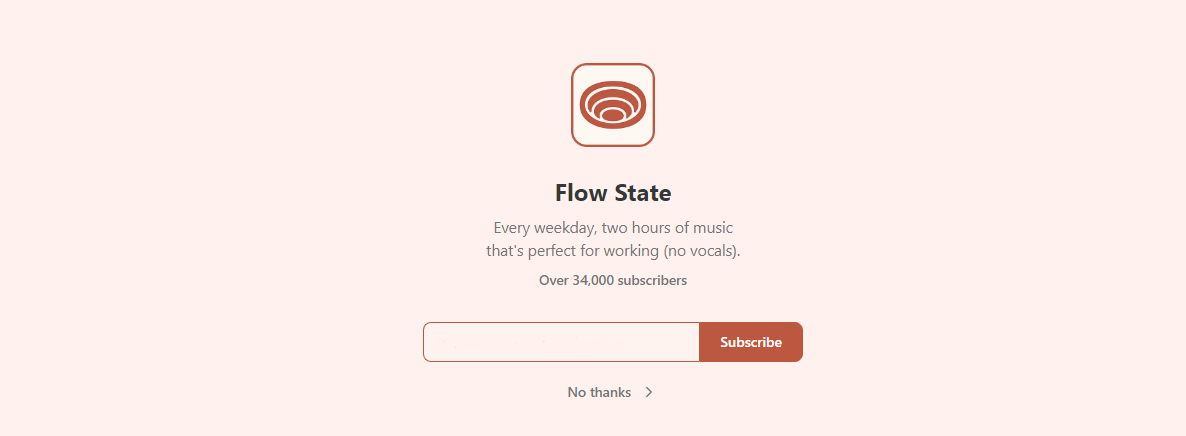
Selling digital products aligns so well with running a newsletter that it should almost be considered a life hack. I dare say that each and every kind of newsletter could benefit from the addition of digital products, such as:
The idea is to create extra content on the side, tell your subscribers that it's up for grabs, and then link them to a platform like Whop. With Whop, you can get started selling in minutes.
5. Try affiliate marketing
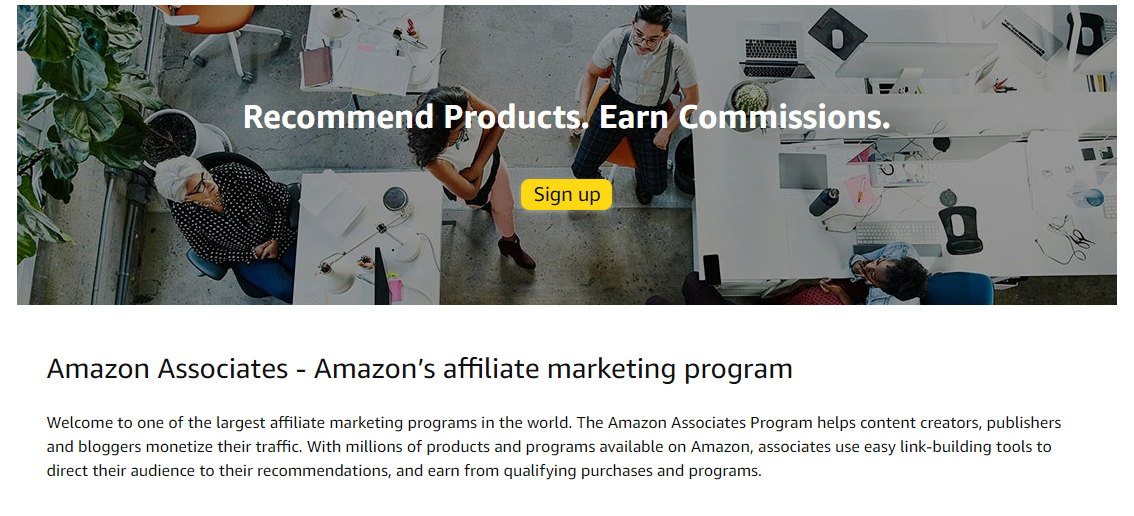
Affiliate marketing marks another good way for you to make some extra cash through your Substack. Much like sponsorships, you can recommend various products to your readers and get a cut of each sale, sign-up, and so on.
The Amazon Affiliate Program is a common way that newsletter and article writers earn some money on the side. You can also partner directly with brands, and if people buy something using your special link, you'll get paid.
Affiliate marketing works best when it's genuine. Avoid its pitfalls, such as overadvertising or linking to irrelevant products. If you're successful, it turns into a solid method of passive income.
6. Sell merch
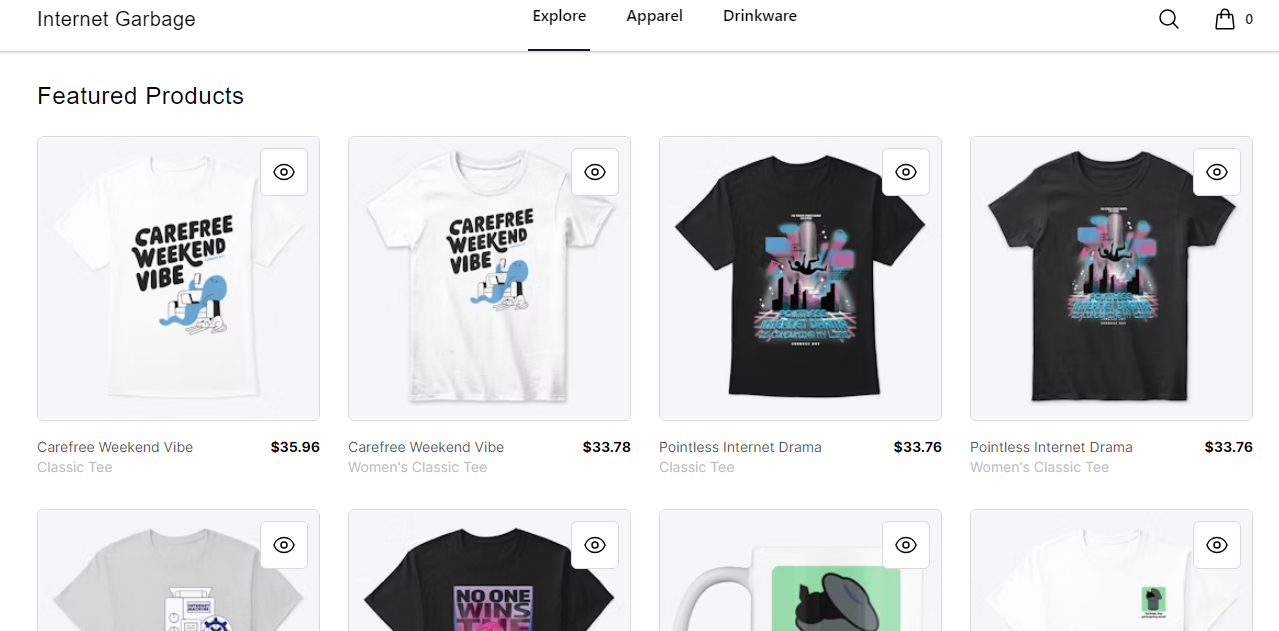
Do you know what's better than having a newsletter or a blog with a long subscriber list?
Having a newsletter with a long subscriber list and some sweet branded merchandise. Your audience will often agree with you.
Once your newsletter grows big enough to invite that kind of interest, consider teaming up with a company to offer merch, be it t-shirts or mugs. You can also use a print-on-demand service like Redbubble.
7. Create and sell courses
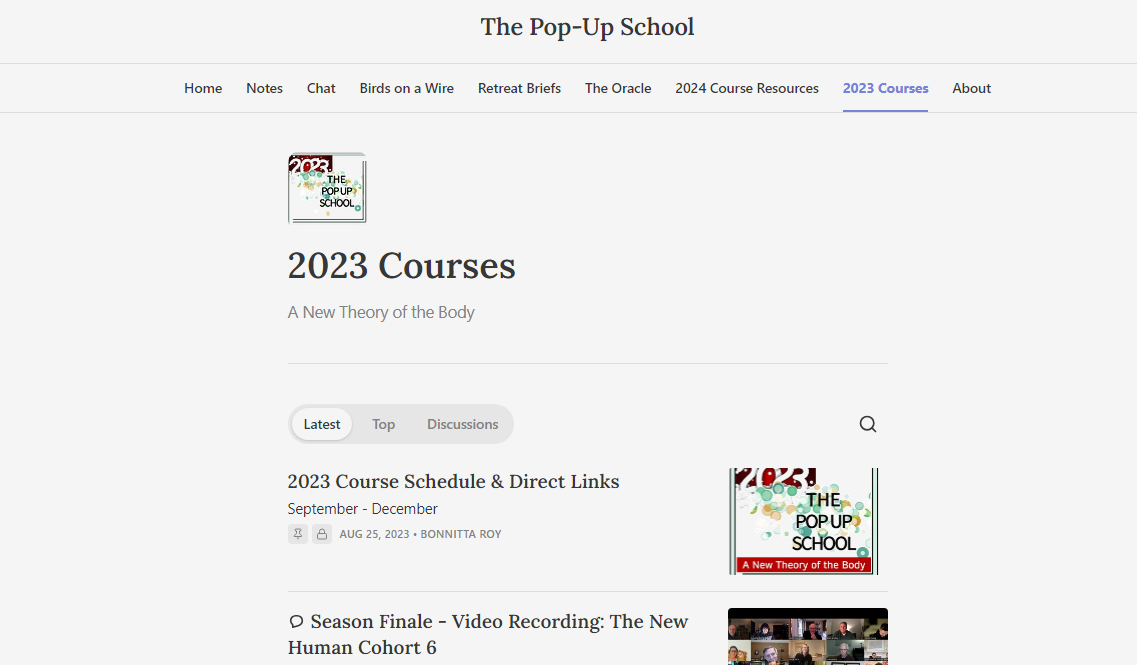
Newsletters and articles are a great resource for anyone who wants to learn, but completing a course is where it's at if you want in-depth, step-by-step instructions.
No matter if your area of expertise is trading stocks or personal fitness, you can make courses and advertise them through your Substack. As seen above, one such example is The Pop-Up School, which offers various courses while also running a newsletter.
Combining courses with your newsletter has a lot of potential. You can give your readers a teaser or a bit of insight into what the course offers, then charge extra for the whole thing. Courses, like ebooks, are a great source of revenue because they rarely need constant updates. They're one of the best passive income ideas you can have.
8. Host events
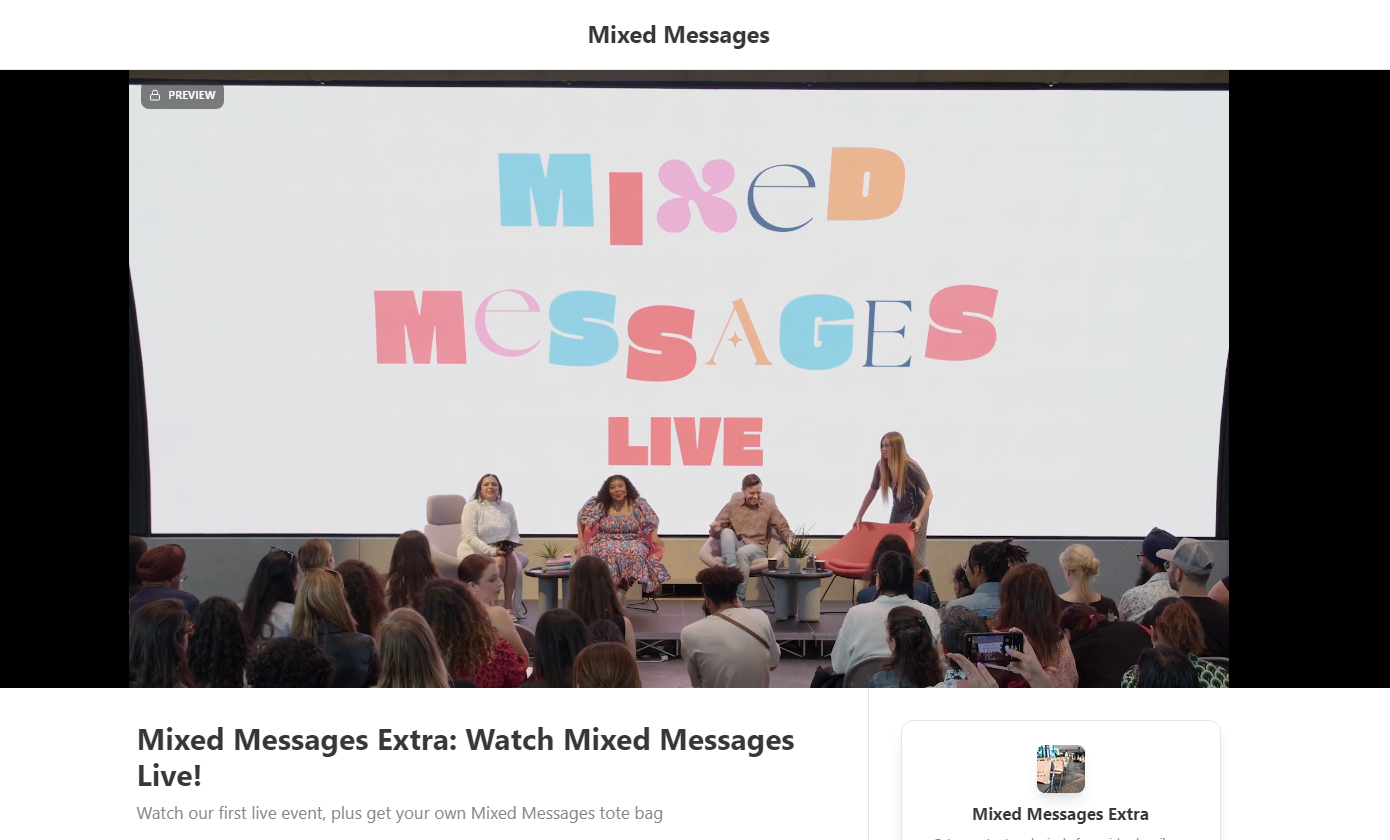
Once you're ready, consider taking your content to the next level and setting up live events. During live events, you can host Q&A sessions, interact with your subscribers, share your thoughts directly, or interview other experts in your niche.
Meeting up in person is great—and those events can be live-streamed, too, as can be seen in the Mixed Messages newsletter—but there are also other options. For instance, you could set up a private Discord community and host those events there—we have a guide on this right here.
Another way to do this is to sign up with Whop. Making your own whop hub takes just a few minutes, and from there, you can add the Events app to host paid events or the Video Calls app to host live calls.
Enhance your earning potential with Whop
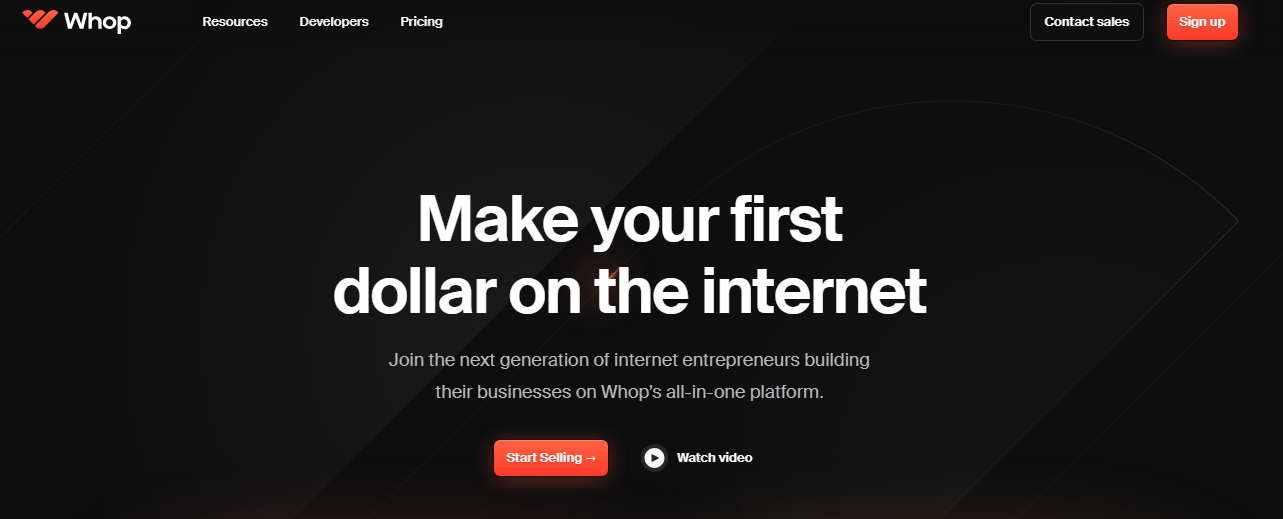
As you can see, Substack is a great platform if you want to write a newsletter or share your thoughts in a series of articles. However, if you want to earn substantial amounts of money, relying solely on Substack memberships may not cut it.
That's where Whop comes in. With Whop, you can increase your revenue significantly by offering more to your readers. You can sell ebooks or courses, set up a private community, host video calls, sell premium content, offer useful templates, and more. Anything that aligns well with your newsletter content can be sold through Whop, and at a minimal fee.
Whop also takes care of the annoying parts of selling your own products and services, like digital order fulfilment, payments and customer disputes. Setting up a whop hub takes minutes, and from there, you can add apps such as Courses, Chat, Files, Video app, and more - your whop is completely customizable so you only add what you need. It's a win-win situation. You get more money and your readers get more of the content they're looking for!
Don't rely on a single source of income when you could rely on several. Get paid fairly for your work, starting today. Sign up with Whop today and maximize your earning potential!

